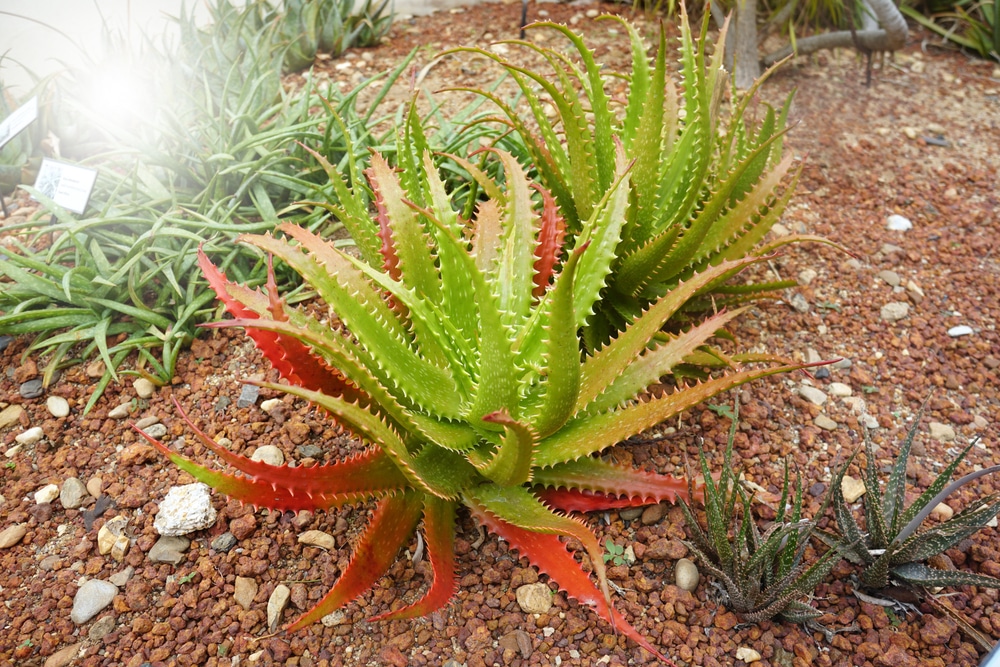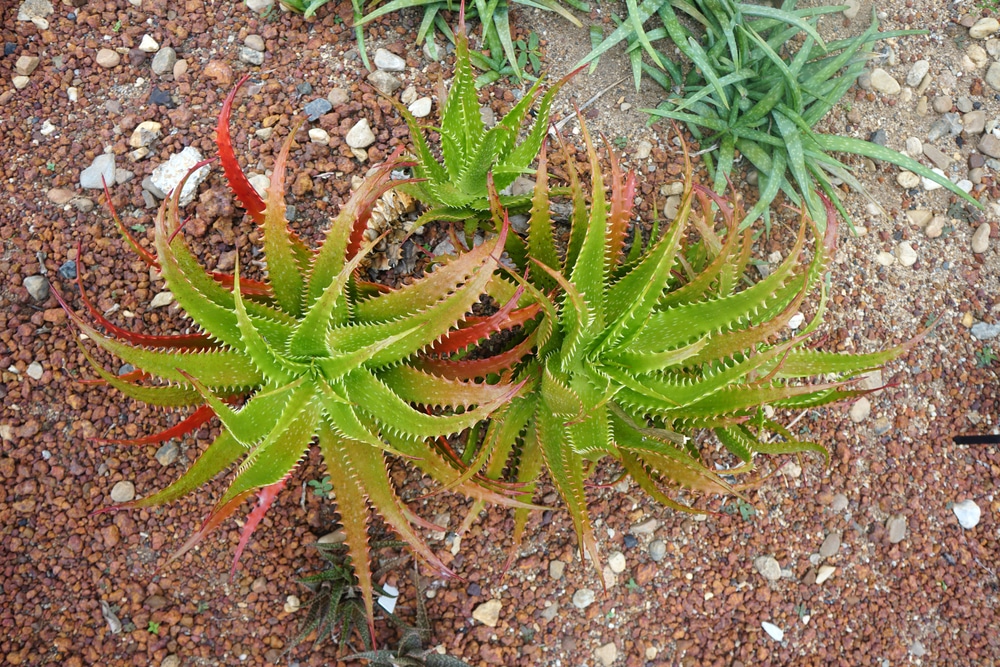Aloe plants are green and spiky and grow in hot, dry climates. They store water in their leaves, which is why they’re often used as an ingredient in lotions and other beauty products. The moisturizing and soothing properties of aloe make it a popular plant to have around the house.
While aloe plants have commonly been known for their green leaves, sometimes, their leaves turn red. Seeing your aloe’s leaves turn into a different color other than its vibrant green hue can be alarming, but it is not necessarily a cause for concern. There are a few reasons behind this. Read more to learn why and what you can do about it.
What Causes Aloe Plants to Turn Red?
There can be some factors affecting this, and most of the time, it is nothing to worry about. It may be simply due to a change in environment or temperature. However, if you’ve noticed that the issue doesn’t resolve on its own, it can be a sign of a more serious issue.
Too Much Sunlight
If your aloe plant is turning red, it could be because it is getting too much sunlight. Aloe plants thrive in bright, indirect sunlight. However, if they are exposed to direct sunlight for too long, they can start to turn red.
The leaves turn red as a safety mechanism to prevent them from getting sunburned. If you think your aloe plant is getting too much direct sunlight, try moving it to a shadier spot.
Too Little or Too Much Water
Too much water might be one of the culprits too. Aloe plants are succulents, so they store water in their leaves. If they get too much water, the leaves can start to turn red or purple. This is a sign that the plant is stressed and is trying to tell you that it needs less water.
However, also underwatering your aloe plant can cause it to turn red. If the plant doesn’t have enough water, the leaves will start to turn red or brown.
How will you know if you’re giving it too much or too little? Check the soil. If it’s soggy, then you know you’ve been watering it too much. If it’s dry and crumbly, then the plant needs more water.
Striking the perfect watering balance can be tricky, but it’s important to get it right.
Too Much Fertilizer
Like overwatering, too much fertilizer can also cause its green leaves to turn red. When you fertilize your plant, you are essentially giving it a concentrated dose of nutrients. If you use too much fertilizer, the excess nutrients can build up in the soil and cause the leaves of the plant to turn red or purple. It is best to fertilize your aloe plant sparingly, about once a month, during the growing season.
If you think you have over-fertilized your aloe plant, flush the soil with water to remove any excess fertilizer, and then cut back on how often you fertilize the plant.
Temperature Stress
A sudden change in temperature can also cause your plant’s leaves to change color. Aloe plants are native to Africa and thrive in warm, dry climates. If they are exposed to cold temperatures or high humidity, it shows in their leaves.
Keeping your plant indoors during the winter months where you can control the temperature and humidity levels can help prevent this from happening.
Repotting Reaction
Aloe plants can also turn red when they are first repotted. This is because the plant is adjusting to its new environment and the change in soil. The good news is that this is usually only temporary, and your plant will return to its normal color once it has settled into its new pot.
When you repot a plant, there is always a risk of transplant shock. This is when the plant gets stressed from the change in environment and starts to wilt or turn color.
If you think your aloe plant is experiencing transplant shock, water it lightly and make sure it is in a warm, sunny spot. The plant should recover within a few days after acclimating to its new pot.
Aloe Plant Turning Red: Final Thoughts
Aloe plants are pretty sensitive, and even a small change in their environment can cause them to turn red. Most of the time, if your aloe plant is turning red, it is nothing to worry about and is simply a reaction to its surroundings.
However, if the plant retains its red color or shows other signs of stress, it is best to address this problem quickly to avoid damaging the plant.

